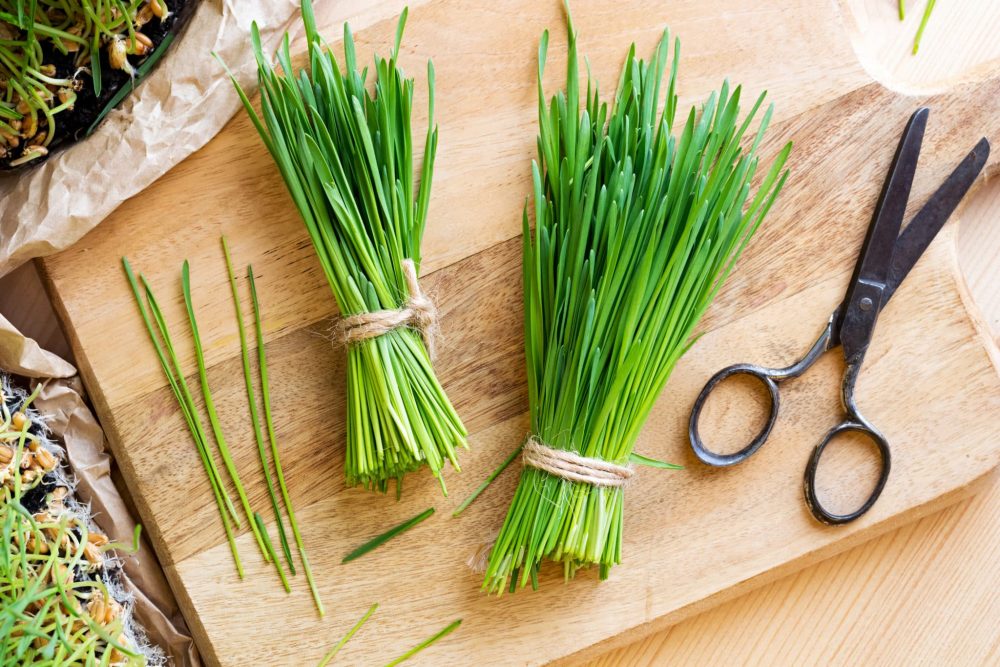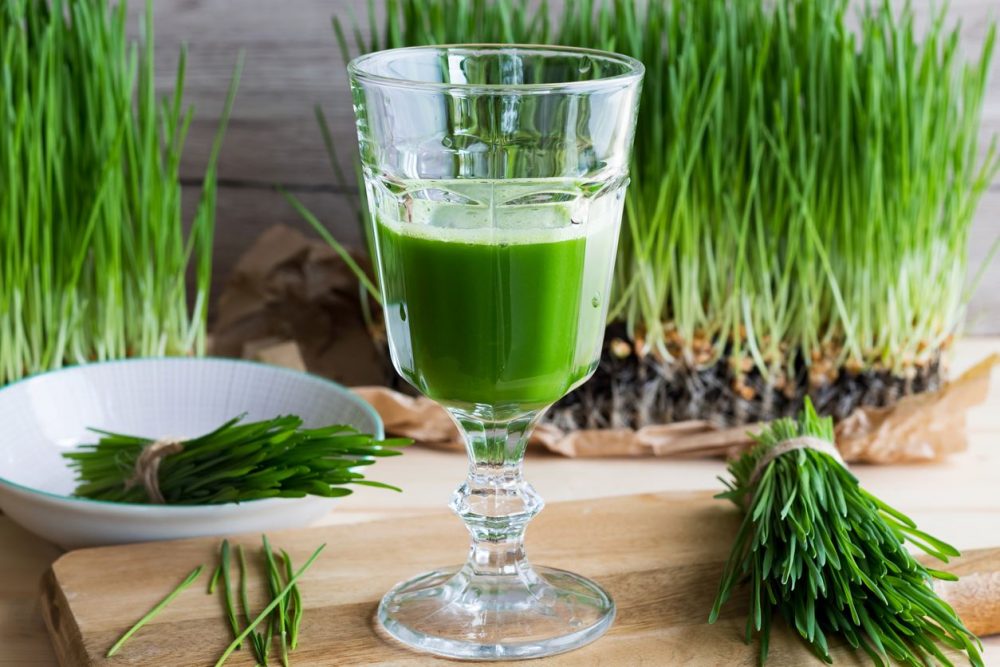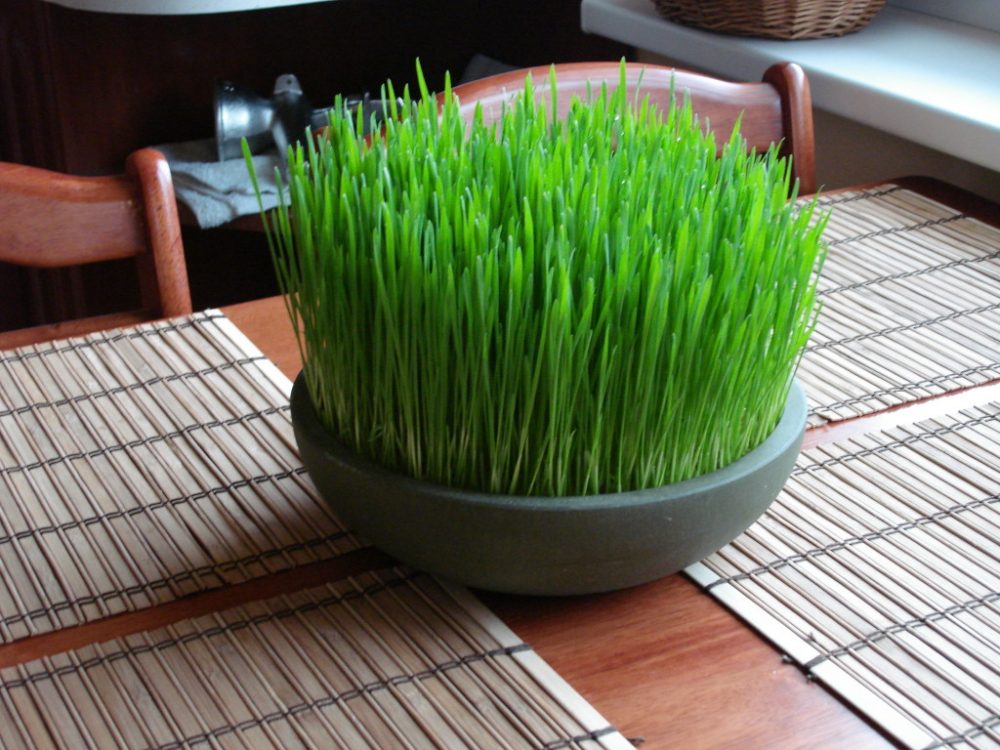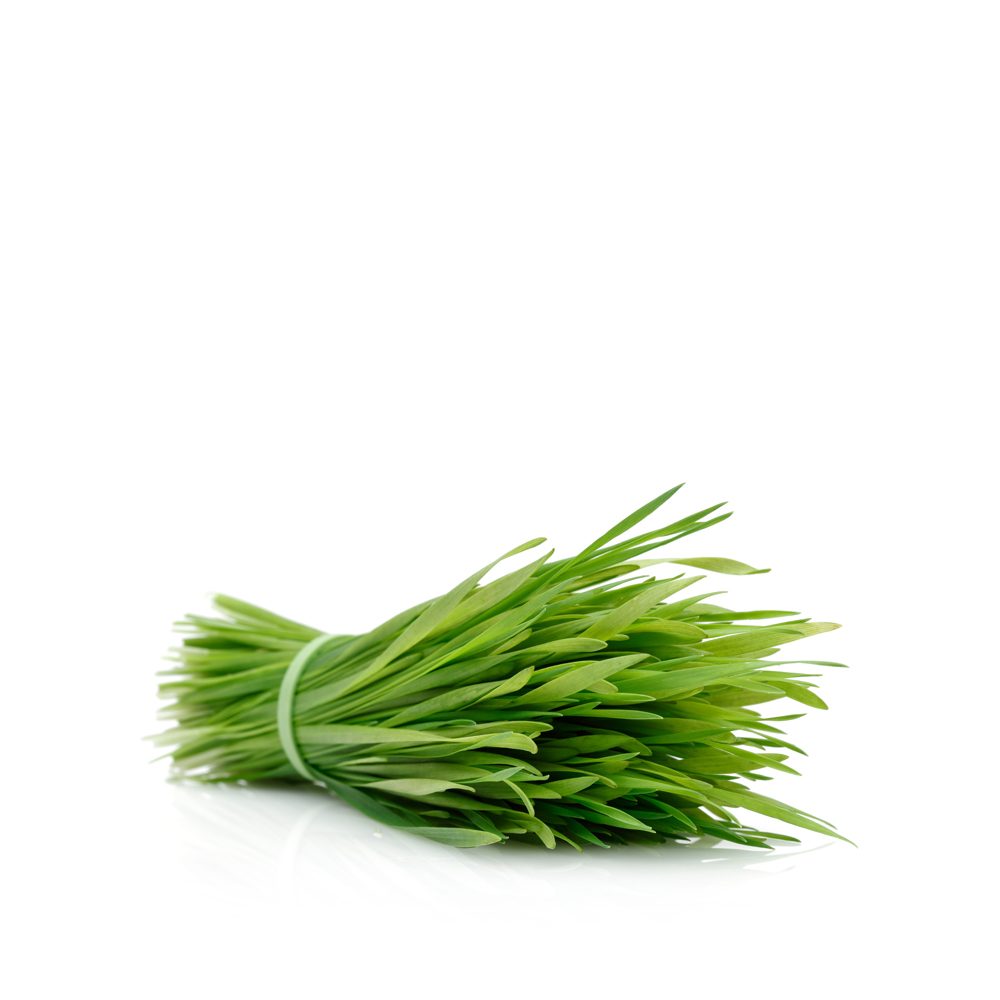
Wheatgrass is a food prepared from the cotyledons of the common wheat plant. Wheatgrass is also allowed to grow longer than malt is. It provides chlorophyll, amino acids, minerals, vitamins, and enzymes. It is often available in juice bars, alone or in mixed fruit or vegetable drinks. It is also available in many health food stores as fresh produce, tablets, frozen juice and powder. Wheatgrass contains no wheat gluten. Wheatgrass is a kind of grass. The above-ground parts, roots, and rhizome are used to make medicine. Wheatgrass is primarily used as a concentrated source of nutrients. It contains vitamin A, vitamin C, and vitamin E, iron, calcium, magnesium, and amino acids.
Wheatgrass proponent Schnabel claimed in the 1940s that “fifteen pounds of wheatgrass is equal in overall nutritional value to 350 pounds of ordinary garden vegetables”, a ratio of 1:23. Despite claims of vitamin and mineral content disproportional to other vegetables, the nutrient content of wheatgrass juice is roughly equivalent to that of common vegetables .
Wheatgrass is also claimed to be superior to other vegetables in its content of vitamin B12, a vital nutrient. Contrary to popular belief, B12 is not contained within wheat grass or any vegetable; rather it is a byproduct of the microorganisms living on plants. Some analyses of B12 content in wheatgrass has confirmed that it contains negligible amounts of the compound even though the source of this analysis remains unclear. The USDA National Nutrient Database reports that wheatgrass contains no vitamin B12.
Health Benefits of Wheatgrass

- Increases red blood-cell count and lowers blood pressure. It cleanses the blood, organs and gastrointestinal tract of debris. Wheatgrass also stimulates metabolism and the body’s enzyme systems by enriching the blood. It also aids in reducing blood pressure by dilating the blood pathways throughout the body.
- Stimulates the thyroid gland, correcting obesity, indigestion, and a host of other complaints.
- Restores alkalinity to the blood. The juice’s abundance of alkaline minerals helps reduce over-acidity in the blood. It can be used to relieve many internal pains, and has been used successfully to treat peptic ulcers, ulcerative colitis, constipation, diarrhea, and other complaints of the gastrointestinal tract.
- Is a powerful detoxifier, and liver and blood protector. The enzymes and amino acids found in wheatgrass can protect us from carcinogens like no other food or medicine. It strengthens our cells, detoxifies the liver and bloodstream, and chemically neutralizes environmental pollutants.
- Fights tumors and neutralizes toxins. Recent studies show that wheatgrass juice has a powerful ability to fight tumors without the usual toxicity of drugs that also inhibit cell-destroying agents. The many active compounds found in grass juice cleanse the blood and neutralize and digest toxins in our cells.
- Contains beneficial enzymes. Whether you have a cut finger you want to heal or you desire to lose five pounds…enzymes must do the actual work. The life and abilities of the enzymes found naturally in our bodies can be extended if we help them from the outside by adding exogenous enzymes, like the ones found in wheatgrass juice. Don’t cook it. We can only get the benefits of the many enzymes found in grass by eating it uncooked. Cooking destroys 100 percent of the enzymes in food.

- Has remarkable similarity to our own blood. The second important nutritional aspect of chlorophyll is its remarkable similarity to hemoglobin, the compound that carries oxygen in the blood. Dr. Yoshihide Hagiwara, president of the Hagiwara Institute of Health in Japan, is a leading advocate for the use of grass as food and medicine. He reasons that since chlorophyll is soluble in fat particles, and fat particles are absorbed directly into the blood via the lymphatic system, that chlorophyll can also be absorbed in this way. In other words, when the “blood” of plants is absorbed in humans it is transformed into human blood, which transports nutrients to every cell of the body.
- When used as a rectal implant, reverses damage from inside the lower bowel. An implant is a small amount of juice held in the lower bowel for about 20 minutes. In the case of illness, wheatgrass implants stimulate a rapid cleansing of the lower bowel and draw out accumulations of debris.
- Externally applied to the skin can help eliminate itching almost immediately.
- Will soothe sunburned skin and act as a disinfectant. Rubbed into the scalp before a shampoo, it will help mend damaged hair and alleviate itchy, scaly, scalp conditions.
- Is soothing and healing for cuts, burns, scrapes, rashes, poison ivy, athlete’s foot, insect bites, boils, sores, open ulcers, tumors, and so on. Use as a poultice and replace every two to four hours.
- Works as a sleep aide. Merely place a tray of living wheatgrass near the head of your bed. It will enhance the oxygen in the air and generate healthful negative ions to help you sleep more soundly.
- Enhances your bath. Add some to your bath water and settle in for a nice, long soak.
- Sweetens the breath and firms up and tightens gums. Just gargle with the juice.
- Neutralizes toxic substances like cadmium, nicotine, strontium, mercury, and polyvinyl chloride.
- Offers the benefits of a liquid oxygen transfusion since the juice contains liquid oxygen. Oxygen is vital to many body processes: it stimulates digestion (the oxidation of food), promotes clearer thinking (the brain utilizes 25% of the body’s oxygen supply), and protects the blood against anaerobic bacteria. Cancer cells cannot exist in the presence of oxygen.
- Turns gray hair to its natural color again and greatly increases energy levels when consumed daily.
- Is a beauty treatment that slows down the aging process when the juice is consumed. Wheatgrass will cleanse your blood and help rejuvenate aging cells, slowing the aging process way down, making you feel more alive right away. It will help tighten loose and sagging skin.
- Lessens the effects of radiation. One enzyme found in wheatgrass, SOD, lessens the effects of radiation and acts as an anti-inflammatory compound that may prevent cellular damage following heart attacks or exposure to irritants.
Restores fertility and promotes youthfulness.
Can double your red blood cell count just by soaking in it. Renowned nutritionist Dr. Bernard Jensen found that no other blood builders are superior to green juices and wheatgrass. In his book “Health Magic Through Chlorophyll” he mentions several cases where he was able to double the red blood cell count in a matter of days merely by having patients soak in a chlorophyll-water bath. Blood building results occur even more rapidly when patients drink green juices and wheatgrass regularly.

British Dietetic Association (BDA) to examined the health claims about wheatgrass and reported:
Despite claims that a 30ml (1oz) shot of wheatgrass contains as many nutrients as 1kg (2.2lbs) of your finest veggies, tests show that, pound for pound, the nutrient content of wheatgrass juice is roughly equivalent to that of common vegetables, such as spinach and broccoli.
Red blood cell production
Fans of wheatgrass believe that because chlorophyll and haemoglobin (a protein that carries oxygen around your body) are similar in structure, taking wheatgrass juice enhances haemoglobin production. But as far as evidence goes, there is no scientific proof to support this claim.
Inflammation of the colon
A small study from 2002 found that patients with ulcerative colitis (inflammation of the colon) saw their symptoms improve after they were given 100ml of wheatgrass juice daily for a month. However, the study involved only 21 people and the positive results could have been simply down to chance. As such, the evidence is inconclusive.
Blood disorders
A small study from 2004 of 32 patients with a blood disorder called thalassaemia found that half of the patients required fewer blood transfusions when 100ml (3.5oz) of wheatgrass juice was taken daily for three years. While interesting, the research has many weaknesses and further research is needed before these findings can be properly validated.
Alison Hornby, a dietitian and BDA spokesperson, says: “There is no sound evidence to support the claim that wheatgrass is better than other fruits and vegetables in terms of nutrition. It cannot be recommended above any other choices in this food group. “Although it contributes towards your recommended daily intake of fruit and veg, a single shot of wheatgrass doesn’t count as one of your 5 A Day. But if you’re a big fan, you could combine a shot with a fruit or veg smoothie.”
Wheatgrass is used for increasing production of hemoglobin, the chemical in red blood cells that carries oxygen; improving blood sugar disorders, such as diabetes; preventing tooth decay; improving wound healing; and preventing bacterial infections. It is also used for removing deposits of drugs, heavy metals, and cancer-causing agents from the body; and for removing toxins from the liver and blood.

Wheatgrass juice is a popular health drink. It is thought to benefit health only when fresh and taken on an empty stomach immediately after extraction. But there is no research to date that supports this. In foods and beverages, wheatgrass extracts are used as a flavoring component.
How does Wheatgrass work:
Wheatgrass contains chemicals that might have antioxidant and anti-inflammatory (swelling) activity, which is why some people think it might be helpful for ulcerative colitis. It also contains a chemical that seems to kill bacterial infections.
Disclaimer
The Content is not intended to be a substitute for professional medical advice, diagnosis, or treatment. Always seek the advice of your physician or other qualified health provider with any questions you may have regarding a medical condition.